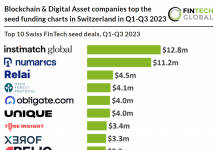A report by McKinsey has outlined the key challenges financial companies facing from the rise of central bank digital currencies (CBDCs).
The 2021 Global Payments Report focused on the four key areas it identified as CBDC and stablecoins, the evolution of global transaction banking, merchant acquiring and the $100bn opportunity in small business.
The chapter of the report that focuses on CBDC details that the co-evolution of stablecoins and CBDCs will ‘bear a direct impact on society’ and that its progress is now well underway due to a recent shift in thinking around cryptocurrency towards cryptocurrencies as a means of financial exchange.
According to the report, regulators in countries with dramatic reductions in the use of cash of preparing strategies to ensure continued availability of central bank currency – subsequently driving increased attention towards CBDC use. The report also detailed that there will likely be some form of coexistence between CBDCs and stablecoins.
McKinsey said, “Within this continuum, we may see flavours determined by geography (for example, central banks such as China’s exerting greater influence through direct control of monetary policy), by market incumbency among private institutions (for example, e-commerce or social media giants in the United States with potential to migrate some user transactions to stablecoins), or by sector (for example, use-based loyalty stablecoins).”
The company also egged on various players across the payments landscape to grasp this growing momentum and position themselves for the ‘inevitable changes on the horizon’.
For example, financial services infrastructure providers are recommended to monitor the suitability of their design choices for future interoperability with digital currencies, while retail banks, merchants and payment service providers are advised to consider how much infrastructure investment is needed for the implementation of multiple CBDC and stablecoin networks.
Meanwhile, private sector banks can consider the best pace for introduction of CBDCs, and chief risk and financial officers can evaluate the broad impact of digital currencies on bank liquidity and capital requirements. Government and central bank regulators can balance factors such as overregulation vs measured regulation in their assessment of the impact of private currency on the efficacy of monetary policy. Investors meanwhile, can anticipate the impact of CBDCs on their assets.
The rise of CBDCs has been seen worldwide, with countries all over the world preparing for the rise of the digital currency. Last week, the Hong Kong Monetary Authority begun the first steps of exploring a CBDC with the release of a technical whitepaper. Meanwhile, the Royal Monetary Authority of Bhutan has teamed with cross-border crypto payment firm Ripple to pilot a CBDC in the region and the Bank of Thailand said it intends to begin a retail CBDC pilot study in the second quarter of 2022.
Earlier this year, UK Chancellor of the Exchequer Rishi Sunak told the Bank of England to look at the case for a potential ‘Britcoin’ or central-bank-backed digital currency.
Copyright © 2021 FinTech Global











